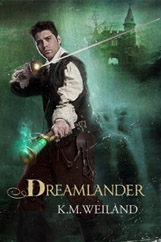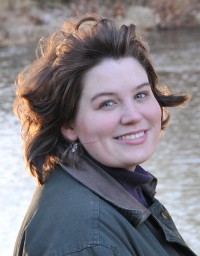
Have you wondered if your dreams could become real? For Chris Redston they’re about to, but the world he finds on the other side of his dreams feels more like a nightmare than anything else.
In Dreamlander, by K. M. Weiland, it’s a world anyone can find in their dreams, but only a few—only the chosen—are able to travel between our world and that world. Only one Chosen can possibly make the journey during a Searcher’s lifetime, but Chris becomes the impossible second Chosen.
The world he enters is already breaking under enemy attacks and the threat of civil war. And when impossible things happen, the very fabric of the two worlds will unravel—unless Chris can undo his mistakes.
Initially, I was a little skeptical about the premise of Dreamlander—which is based on the mysterious woman Chris Redston keeps seeing in his dreams. But, once well into the story, Weiland takes some interesting facts about sleep patterns and builds them into an intriguing alternate reality.
The story is a hard one—the general rule is that if Chris’s situation can get worse, it will. This becomes especially true in the ending, which I somehow found inevitable, while still expecting it to change along the way. I'm not even sure what to think of the ending, and I can’t say more without giving the story away, but the book does give a thought-provoking, difficult story of sacrifice and redemption.
Apart from the story itself, I particularly enjoyed Weiland’s unique twist on world-building. Where a lot of fantasy authors stick to a traditional medieval world, Dreamlander’s world appears to be a modified early-renaissance setting, with firearms, and other technological advances. And, taking full advantage of her parallel worlds, Weiland brings some of the fantasy elements back into our world, Chris’s home world.
It’s also important to note that Weiland writes from a Christian perspective. In the dream-world especially, this influences the mythos of the country and the schism developing between its citizens, though without using Christian labels. I enjoyed this element, even though it didn’t seem fully explained, but some readers might find it awkward.
I’d rate this story as an older teens/adult read, for anyone looking for something a little different in fantasy, and anyone okay with a not-quite-happy ending. For writers, I would also recommend a look at Weiland’s blog, where she talks about some of the story-building techniques I noticed in Dreamlander: http://wordplay-kmweiland.blogspot.com
[My thanks to K. M. Weiland and the Story Cartel for offering an electronic review copy of Dreamlander, in exchange for my honest opinion of the book. ]

